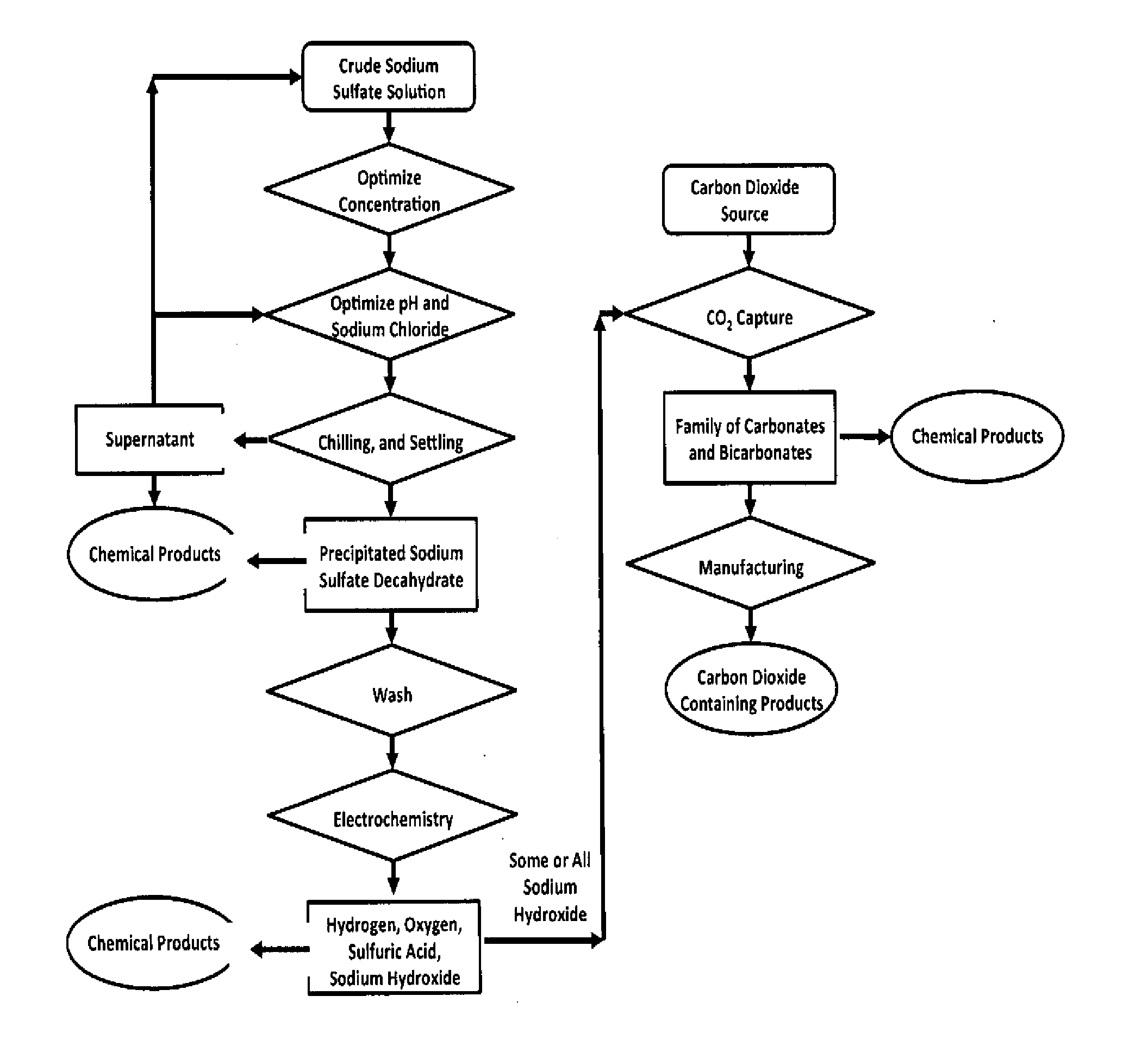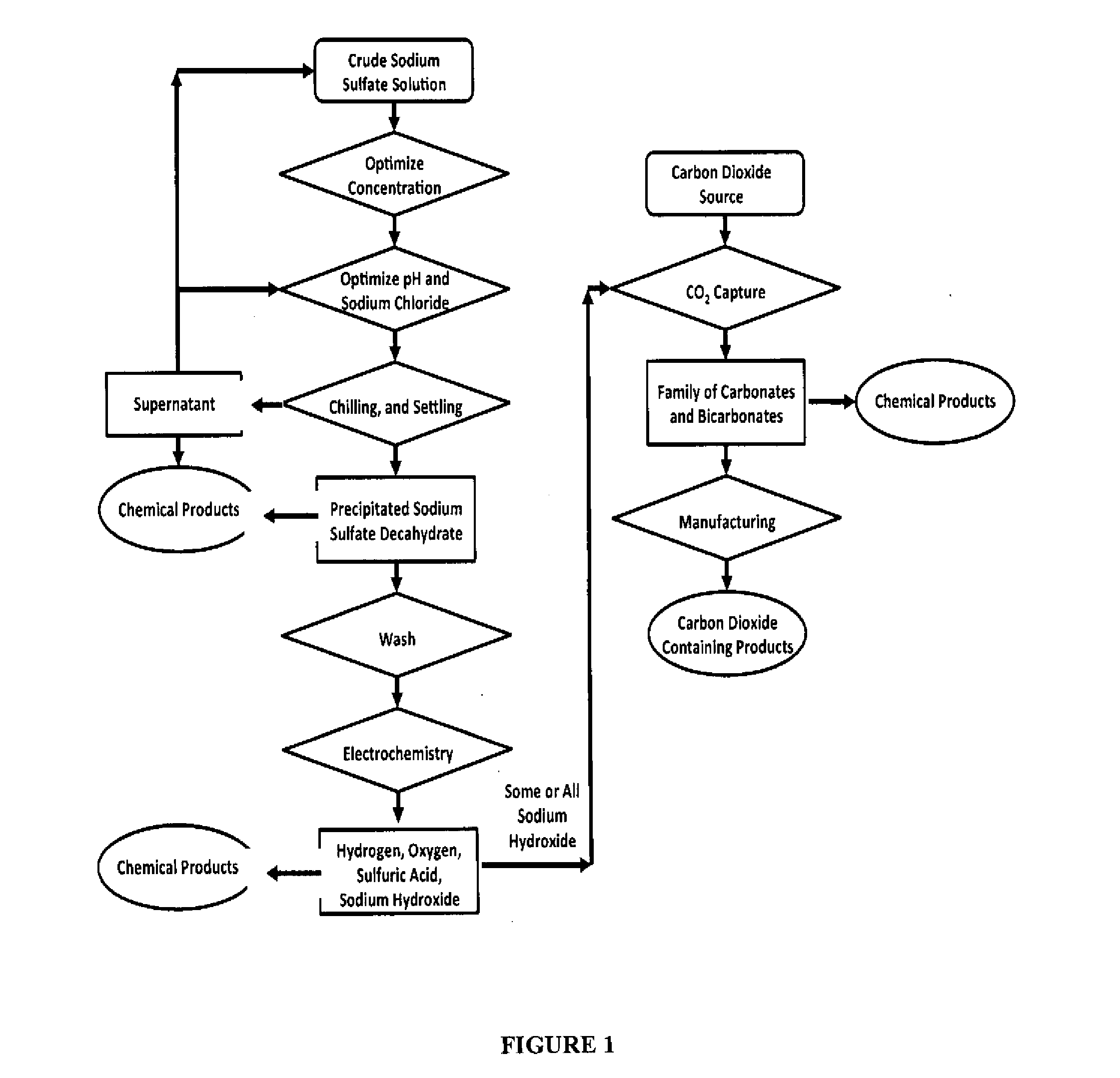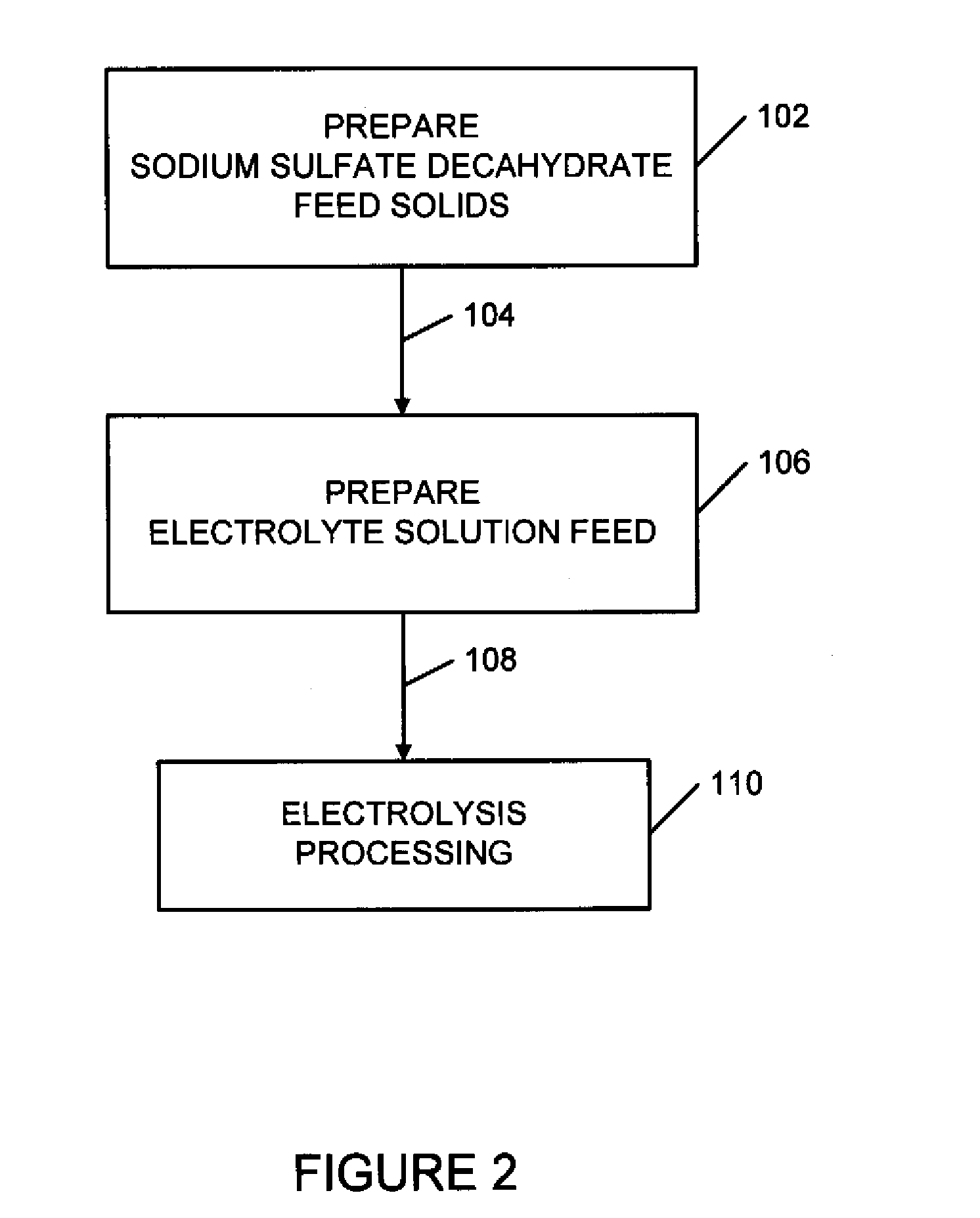Sulfate-based electrolysis processing with flexible feed control, and use to capture carbon dioxide
a technology of sulfate and electrolysis, applied in the field of electrolysis processing of alkali metal sulfate salt solutions, can solve the problems of large quantity of chlorine, and large excess chlorine supply relative to reasonable anticipated commercial demand, and achieve the effect of reducing the temperature of the aqueous salt solution
- Summary
- Abstract
- Description
- Claims
- Application Information
AI Technical Summary
Benefits of technology
Problems solved by technology
Method used
Image
Examples
examples
[0108]Some aspects of the present invention are further described in the following examples that are intended as illustrations only. Unless otherwise noted, all parts, percentages, and ratios reported in the following examples are on a weight basis, and all reagents used in the examples were commercially obtained or may be synthesized by conventional techniques.
[0109]Gypsum is slightly soluble in water (2-2.5 g / L). Empirical testing has shown that sodium chloride can significantly increase the solubility of gypsum in aqueous solution. Aqueous solutions of 5% to 15% sodium chloride can double the solubility of gypsum. An approximately 10% aqueous sodium chloride solution demonstrated optimal laboratory results, increasing the dissolved concentration of gypsum to 3%. In a series of related experiments, it was observed that 10% sodium chloride maximizes the precipitation of sodium sulfate from aqueous solutions upon chilling. These two observations work synergistically as described bel...
PUM
| Property | Measurement | Unit |
|---|---|---|
| Temperature | aaaaa | aaaaa |
| Temperature | aaaaa | aaaaa |
| Temperature | aaaaa | aaaaa |
Abstract
Description
Claims
Application Information
 Login to View More
Login to View More - R&D
- Intellectual Property
- Life Sciences
- Materials
- Tech Scout
- Unparalleled Data Quality
- Higher Quality Content
- 60% Fewer Hallucinations
Browse by: Latest US Patents, China's latest patents, Technical Efficacy Thesaurus, Application Domain, Technology Topic, Popular Technical Reports.
© 2025 PatSnap. All rights reserved.Legal|Privacy policy|Modern Slavery Act Transparency Statement|Sitemap|About US| Contact US: help@patsnap.com



